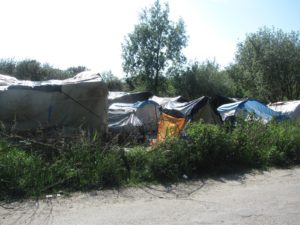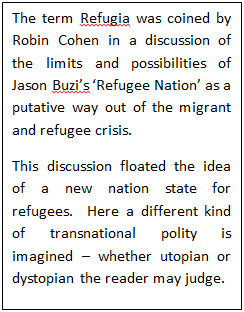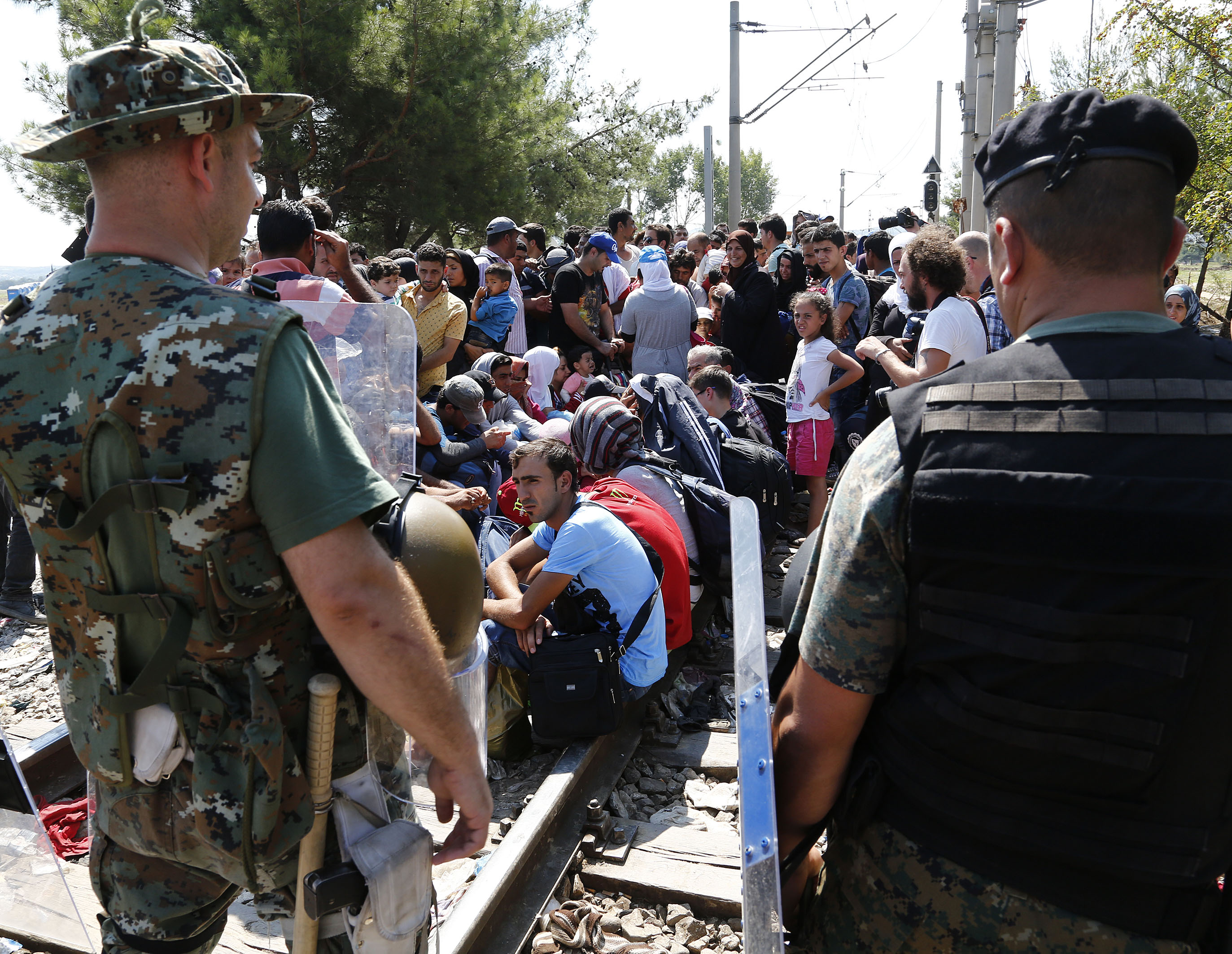It is 2030. Identity conflicts fed by ethnic, nationalist and religious loyalties continue to convulse many parts of the world, particularly a swath of territory from Western China to Western Africa, where religious and ethno-nationalist insurgencies slug it out. The big powers – China, India, Russia, Europe, America, Brazil and Indonesia – are dragged into many-sided proxy wars.
It is a global condition that analysts have come to term permaconflict, and millions of refugees are on the move as a result.
Meanwhile, a transnational polity that has become known as Refugia is consolidating itself. This is not a new nation-state, but rather a trans-national or cross-national entity initiated by refugees and displaced people. Confederal and archipelago-like in character, it brings together refugee communities in territories neighbouring societies in conflict, as well as in enclaves in transit countries and in neighbourhoods in more distant countries of settlement.
Refugia is in part the outcome of a tacit grand bargain – among richer states and emerging countries, countries neighbouring conflicts and, crucially, refugees themselves. The constituent territories of Refugia are in effect licensed by the nation states within whose territories they lie. Though subject to the host states’ laws, they are self-governing and eventually self-supporting.
The upshot is that refugees are no longer primarily the responsibility of the nation-state that ‘hosts’ them, but of a more diffuse entity – Refugia.
Refugians hold dual belongings: as well as affiliation to Refugia they can be long term residents of the states which license their territories. They can move among different parts of Refugia, and, where negotiated, between sovereign nations.
Refugia is governed by a transnational virtual assembly, elected by Refugians from all the constituent components of the polity. This represents Refugia globally, but there are also constituent assemblies in each Refugia location to feed into this global representation, as well as to represent the interests of Refugians to the host society – and to channel the concerns of the host society to Refugians.
Refugians pay taxes or contributions to the nation-states within which they live, but also to the wider Refugia polity. A portion of the latter revenue provides support for those who choose to stay in their regions of origin, or can be used to leave such regions – in a similar manner to the way in which remittances are deployed now. In this way disparities among different parts of Refugia are ironed out.
Refugia is not based on ethnicity, nationality or religion. Permaconflict has convinced many people of the fallacy of basing communities on such identifications. Moreover people have been of necessity pressed into collective activity across such affiliations by their experience of forced mobility. Differences are respected, but Refugians have been impelled to create a new kind of polity that is democratic and self-sustaining – and not based on identity politics.
Refutopia?
If you think that all of this is utterly fanciful, consider this: Refugia arguably already exists in prefigurative, fragmentary and highly imperfect form.
In countries that have long hosted large numbers of refugees and will likely do so for the foreseeable future – Turkey, Jordan, Lebanon, Iran, Pakistan, Kenya, Ethiopia and Uganda among others – refugees have established tenuous communities against the odds of challenging conditions and poor prospects. These populations have links with more fortunate kin and friends in global cities further afield – not just in neighbourhoods of New York, London, Paris, Berlin and Sydney, but of Istanbul, Cairo, Mumbai, Rio and many others in the emerging world, where people of diverse ethnicities and backgrounds are thrown together.
Taken together, people in these dispersed locations constitute transnational communities through their diasporic connections. The transformational step towards a transnational polity would be to move beyond ethnic identification to a global affinity of the displaced.
As for governance, many diaspora groups have already created transnational bodies which – though again imperfect – could serve as partial models of governance. In some cases transnational elections have been held that sustain such transnational institutions. As for finance, reference has already been made to remittances by refugees to their troubled homelands and regions – in effect a form of global redistribution of wealth somehow akin to taxation. As many have pointed out, the scale of this transnational redistribution is huge. And proto-Refugia exists in the realm of culture, seen in the transnational mobility of art, music, dance and language. In sport too: a refugee team is to be recognised at the Rio Olympic games – a very modest step in the big picture perhaps, but a tacit recognition of a body of people outside nation-state affiliation.
 Mobile commons across ethnic divides
Mobile commons across ethnic divides
More significant are cross-ethnic and cross-national affinities that have emerged among people on the move: mobile commons activities in which collective actions by migrants and refugees drawn from different nationalities and ethnicities have built solidarity and effected change. Examples include sub-Saharan Africans thrown together in emergent communities crossing the Sahara or holed up in Libya or in the Jungle near Calais. Or the ways in which Syrians, Afghans, Iraqis, Eritreans and others have cooperated (along with concerned citizens) at the borders of Turkey, Greece, Macedonia, Serbia, Hungary, Austria and Germany to force changes in European migration and asylum order – however short-lived such changes have proved to be. Squalid and desperate though the Jungle, Idomeni and their ilk may be, the positive side is that they feature community creation sustained by migrants and concerned citizens working together.
Camps and communities in countries neighbouring conflicts, neighbourhoods in global cities, transnational political practices and money transfers, emergent communities and activities in disparate locations en route: all are fragments that taken separately do not seem to promise much. But in the aggregate they could add up to Refugia, imperfectly prefigured. Consolidating them into a common polity might prove to be a way out of the current impasse further down the line – perhaps before 2030.

